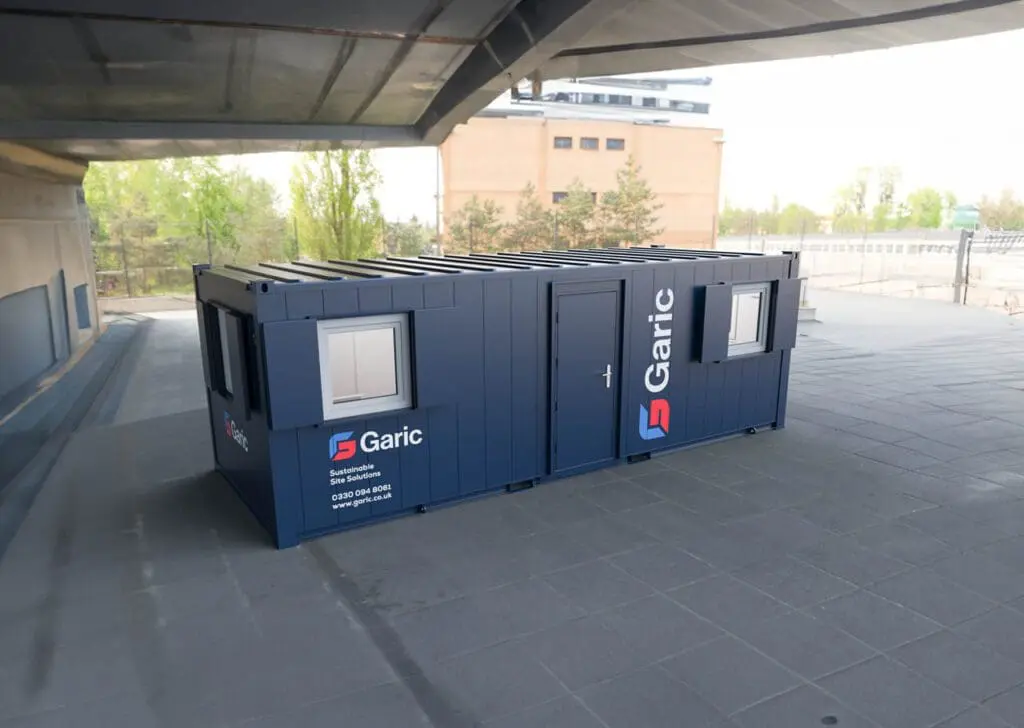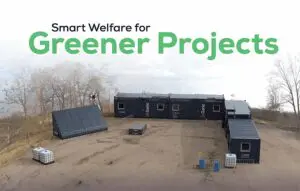Beyond Compliance: Smart Welfare for Greener Projects

Emissions produced by the construction industry have risen more than 33% over the last 30 years. On site, that means higher fuel costs and higher sustainability targets.
Every generator running 24/7, Every light left on. Every inefficient site setup.
They all add up to that 33%
A typical civil project runs anywhere from 12 to 24 months, meaning that even small inefficiencies can add up to tens of thousands of pounds in wasted energy and a sizeable carbon footprint to match.
Every light that’s left on for an extra hour, every poorly sealed door that lets the heat escape, and every generator idling at low load, they all add up. The result? More money spent, more carbon released, and less efficient site performance.
So how can civil engineering teams cut energy waste, lower emissions, and reduce their carbon footprint, all while keeping operations smooth and compliant?
The Hidden Carbon in Site Welfare
When we talk about carbon reduction, most people jump straight to materials or logistics. But one of the most overlooked sources of emissions on site is welfare setup, the cabins, generators, lighting, and heating that keep people comfortable and projects running.
- Diesel-powered welfare units idling 24/7
- Over-sized generators running below capacity
- Poorly insulated cabins leading to heat loss
- Lighting, heating, and HVAC left on after hours
These are small inefficiencies, but together they can account for 15-20% of total site energy use. The good news? Welfare is also one of the easiest areas to optimise.
5 Smart Steps to Reduce Your Site's Carbon Footprint
You don’t need a complete site overhaul to start making an impact. Small, smart adjustments can deliver noticeable savings in both fuel and emissions.
- Choose a well-insulated unit
Minimise heat loss and reduce the energy needed to maintain comfortable site conditions. - Monitor your energy performance with telematics
Track real-time usage, spot inefficiencies early, and make data-driven improvements. - Install smart plugs and timers
Automate shut-offs for idle equipment and after-hours power usage. - Encourage behavioural change
Build awareness among teams, simple habits can reduce consumption by up to 10-15%. - Make sure doors are properly shut to prevent heat loss
Keep warmth in and your energy bills down by sealing gaps and ensuring doors close fully.
- Choose a well-insulated unit
Beyond the immediate cost savings, these actions help future-proof projects, reducing emissions today while setting a higher standard for sustainable site management tomorrow.
Why It Matters: The New Sustainability Mandate
The UK is tightening its sustainability requirements for construction. While some frameworks aren’t fully mandatory yet, they’re increasingly shaping procurement and tender outcomes.
Key initiatives include:
- PAS 2080 – Managing carbon in infrastructure
- BS 8905 – Responsible resource management and material use
- Future Homes & Future Buildings Standards – Driving low-emission construction
From tender to handover, civil contractors are now expected to demonstrate measurable energy efficiency, carbon tracking, and reduced embodied emissions.
And it’s not just about compliance, it’s about winning work, accessing funding, and protecting reputation.
Smart Welfare in Action: The Garic Approach
We believe sustainability shouldn’t mean you have to compromise performance or functionality on site. Our eco welfare range is designed to help sites transition seamlessly to carbon reduction, while still being able to use all the facilities in the cabin.

- Two private WC for separate male and female facilities
- Circular economy refurbished unit
- Microgrid technology powers this unit

- Flexible Can be open plan, office or canteen
- Efficient Fully insulated to keep the heat in
- Lighting Lumin lighting inside the unit
Sustainable Partnership From Day One
Let’s build smarter, sustainable sites together, contact us today to see how our solutions can reduce emissions, support your team, and drive your projects forward.



